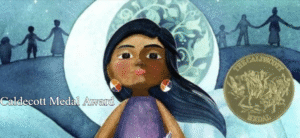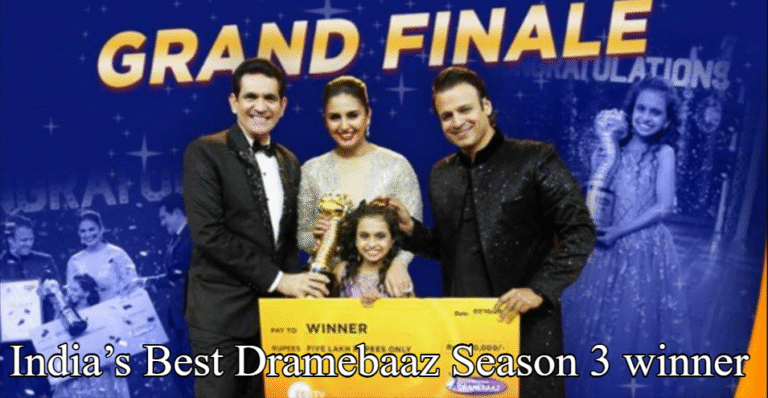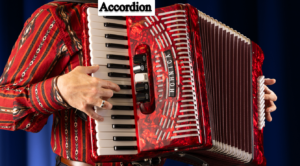Human voices are the most stunning and versatile musical instrument. Each voice is distinctive in how it receives and communicates music. This has allowed us to create a variety of music styles and genres. Every genre of music, whether it’s Jazz, Rock, or Country is a journey that is unique to it. This article we’ll examine some of the top well-known music styles that have been appealing to both masses and classes.
For this piece, we’ll examine some of the more well-known songs that have been a hit to both masses and classes alike.
List of 10 Popular Singing Styles and Genres
1. Opera
Have you been to an Opera? What’s the experience when Opera singers sing to a high pitch and maintain their voices to that note for an extended period of period of time?
It’s as if they’re balancing everything on stage and across the whole range of their audience one moment. Solo songs from the Operas are also referred to as arias, are an exceptional aspect of this type of music.
Opera is a genre of theatre with a high percentage of music. The opera singing style is comprised of a variety of vocal techniques, such as breath support, projection, vibrato, and resonance.
It also requires a lot of acting abilities since the songs serve as a foundation to tell stories, play and roleplays. It is also an opportunity to enact, recite and perform roles. Opera singers also have to navigate the wide range of their vocal range, which demands their voices to be able to change.
Coming back to at which we began with Opera frequently demands long, continuous phrases. Singers are able to maintain a stunning and controlled sound for long time periods, which require endurance and endurance.
These are a few characteristics of the opera style that allow it to put together a stage performance that can fulfill the demands of drama and music.
2. Musical Theatre
The musical theatre genre is combination of two different genres: the opera and dance. Similar to opera, it combines vocal elements as well as acting to can help convey different emotions.
The musical theatre voice is an expressive and versatile style that incorporates elements from traditional and modern techniques. Lyrical verses make up an integral element of the story and also the delivery of dialogue.
Singers employ a variety of vocal qualities and fashions to represent various characters. This could include changes in vocal tone, pitch and phrasing in order to create the character.
Musicals feature a variety of styles, from classical Broadway and classical musical theatre to pop-inspired and contemporary music.
The singers use belts and mix their vocal techniques in a way that is appropriate to the story’s requirements. Singers must sing in a way that their voices can be heard by the audience. They must as well, sing while dancing. This requires a strong breathing support, stamina and resonance.
3. Pop
Pop music is popular music of the people in the masses. It incorporates elements from urban, rock, Latin, and country music. It is a simple and memorable songs that have a fast and broad appeal.
What sets pop style distinct from other styles is its flexibility to changing music trends. It’s always relevant and palatable for the people who listen to it.
The infectious hooks and melodies quickly are absorbed into the mind of the listener. The focus on memorable songs helps to create a broad popularity and its commercial success.
The pop-singing style uses vocal techniques like the energetic and powerful full belt, the mixed belts – which combine elements of chest voice (lower range) and the head voice (higher range) along with the intimate and soft breathy voice, and the transition from different voice registers via the voice break.
The most popular pop songs that made people dancing to the tune are Miley Cyrus’ Flowers, Tate McRee’s Greedy as well as the song by Taylor Swift’s Anti-Hero among other tracks.
4. Country
Country music is deeply rooted in American folklore, which incorporates elements from a variety of regional styles, such as Appalachian, Western, and Southern folk music.
The country music genre is typically marked by lyrics that tell tales of daily life and heartbreak, love and family experiences.
Many country artists have distinct vocal styles with the characteristic “twang” that adds a distinct flavor to their sound. In addition the banjo and pedal steel guitar make up the distinctive distinct twang.
While storytelling is essential the country music genre also puts the emphasis on melodies. Melodies that are singable and memorable are the mainstay of this genre. It is influenced by a variety of subgenres like classic country music, Outlaw Country bluegrass, and country pop as well as other subgenres.
Country music frequently is a reflection of and celebration of working-class and rural lifestyles. It focuses on themes like rural life and ranching, farming, as well as the everyday struggles of people. It creates a sense belonging and friendship between the listeners. It is an expression of values and experiences that are shared and creates a connection between fans and artists.
5. Blues
Blues music is deeply rooted within music that is deeply rooted in the African American experience, has a rich and varied history that spans 100 years.
In the latter part of the 19th century, in the period of slavery and then during the Reconstruction period, African American communities developed field hollers and work song as expressions. These were used as a method of communication relief, as well as a way to preserve of culture.
Blues music typically explores the range of incredibly emotional states, such as sadness, heartache, longing and resiliency. The lyrics and the melodies of blues songs create emotions that are deeply felt and allow listeners to feel to the feelings of the musicians.
Blues singing is distinguished by its soulful and expressive vocal delivery. Singers typically employ techniques like melismas, slides of the vocal and varying pitch variations in order to express the emotion depths that the song lyrics.
A common element of blues performances is the call-and response pattern in which a song sang by a singer is responded to by an instrument or audience.
Utilization of “blue notes,” which require bending or lowering the pitch of particular notes is a distinct characteristic of blues tunes. A further feature that is essential is the blues pattern of 12 bars which is a repeated chord progression that serves as the framework for improvisation.
Blues sensitivities had major influence on the evolution of a variety music genres such as rock and roll, jazz R&B as well as soul.
6. Jazz
“I see green trees
The red roses are also lovely
I can see them blooming
For me and you
Then I think about myself
“What a wonderful world”
Simple lyrics that reach hearts, gentle beats, and a beat that is rhythmic. famous track from Louis Armstrong encapsulates the essence of Jazz songs, or vocal jazz.
Vocal jazz, which is a subgenre within jazz music, began in the 20th century, and became an integral component of the jazz tradition in general. Its origins can be traced to the amalgamation of musical styles from Africa, European harmonies, and blues sensibilities.
Musical genres like ragtime spirituals, ragtime, and tradition of improvisation in New Orleans also left an impact on jazz vocals.
A few of the most significant characteristics of jazz vocals are – the improvised melody of phrases and lyrics, scat-singing, as well as vocal embellishment. It is characterized by a distinctive rhythmic vibe that’s called “swing.” Singers frequently use syncopation and rhythmic flexibility in giving a feeling of rhythm and an exuberant, propulsive swing.
Jazz vocals often incorporate elements of blues music which include blue notes, emotive slides and a soulful, emotional delivery. Blues influences contribute to the emotional richness of jazz vocals.
The instrumental and vocal song medley is an additional distinctive element. It’s something like a conversation, exchange of phrases and call-and-response with the group. It is a feature that is derived from blues.
Jazz singers utilize a variety of vocal techniques, such as vibration, legato-style phrasing and dynamic variation to express emotion and bring more an element of expressiveness to their performances.
7. Rock
The rise of rock music began in the middle of the 20th century as a blend of different styles of music. The roots of rock music are in blues and rhythm (R&B) as well as country and gospel music.
The pioneers who helped shape this genre and made it popular include the likes of Chuck Berry, Little Richard and the ‘King of rock and roll’ Elvis Presley.
In the next decade there were a number of Rock groups like The Beatles and The Rolling Stone were formed. The genre was later diversified into a variety of sub-genres, including folk, psychedelic rock music, and garage rock.
The development of the rock-singing style is a reflection of the genre’s ability to take in and interpret various musical influences, while keeping its spirited and expressive nature.
The style of rock singing is defined by a ferocious voice projection expression, vocal distortions, such as shouts and screams that bring grit and energy in the performances. It is also an arrangement of verses and choruses that engages the audience in live performances.
Rock music typically features dramatic changes in the dynamics and vocalists effortlessly transitioning between more gentle sections and loud, anthemic choruses. This dynamic contrast helps to the rhythmic ebb and flow of songs by rock.
A pronounced sense of rhythm and beat with clapping and stomping and featuring a variety of timbres, from falsetto all the way to belt and chest voice – are some of the key features of the rock style.
8. R&B
The roots of the genre are in African American musical traditions, Rhythm and Blues (R&B) has evolved over time by incorporating different influences. R&B vocal style is distinguished by a soulful voice emotional depth and sophisticated rhythmic swagger.
R&B is the fusion of jazz, gospel blues and folk music, was born with the emergence of rock roll. Later on, R&B took a distinct departure to rock.
Modern R&B is distinguished by its use of synthesizers and keyboards, as well as its hefty bass lines as well as looped beats on drums has more in common with hip hop than rock.
Contemporary R&B tracks continue to dominate charts of music, confirming its position among the top lucrative commercially profitable music genres of the present.
The style of singing is characterized by a variety of vocal techniques which include ornamentation, vibrato and transitions between various vocal registers, and spontaneity and expressive phrasing, among others.
9. Hip-Hop
The hip-hop singer is the voice of hip-hop music which was born during the USA in the 1970s. Hip-hop has served as a powerful platform for discussing social problems, inequality and systemic problems. Many hip-hop artists utilize their songs to bring awareness and promote positive transformation.
The core of hip-hop is rap which is characterised by the rhythmic and rhymed speech spoken on beats. Rap is a potent instrument for self-expression, storytelling as well as social commentary.
Hip-hop is a genre that thrives on innovation by incorporating elements of sampling of songs to make new sounds and beats. The culture of sampling has helped create the variety of music in hip-hop.
With regard to hip hop’s singing, a noteworthy example of creativity and the integration of a variety of aspects includes Lauryn Hill’s performance in Fugees famous track “Ready or Not” from their album “The Score” (1996).
Lauryn Hill, who is a Fugees member effortlessly mingled elements of soulful and rap in her performance of “Ready or Not.” On this track she shows off her distinctive hip-hop style of singing by singing quick-fire, rhythmic verses that are the most soulful and melodic voice.
10. Heavy Metal
Heavy metal’s style of singing is distinguished by a number of distinctive features that differentiate it from other styles of singing. These traits are the reason for heavy metal’s fierce, powerful and often dramatic character.
Singing in the upper register is an essential characteristic of the category. It also incorporates extreme vocal techniques such as shouts and growls that enhance the sound.
Heavy metal singers often employ full-throated belting to deliver strong and steady notes to keep the intensity. Certain heavy metal singers use falsetto screams in order to produce striking high notes and piercing screams. This technique provides a theatrical and dynamic aspect in the vocal.
The frequent shifts between melodic and soft notes in the direction of intense and abrasive vocal projections. In the end, the distinctive elements of the heavy metal style are the reason for the genre’s distinct sound and capability to communicate a wide spectrum of emotions, from the rage and rebellion, to dramatic storytelling and stage fright.
Last Word
Since the beginning of time, different styles of singing have became a means of expressing emotion by telling stories, expressing emotions, or vocalizing protests. From the earliest days of the rhythmic chants that accompanied the chartbusters of our days, the varying vocal styles have fascinated people of all ages and across generations.
The simple nature of the country genre carries the legacy of nostalgia and tradition that connect us to our heritage. Blues and jazz, which spring from the midst of struggle and determination, fill their music with raw authenticity, forming an emotional bond between the artist and public. In addition, the symphonic complexity of pop, rock and hip-hop serve as a poetic representation of modern urban life, addressing the new generation with a language that they know.
Each genre has an array of music which could be your favourite also. If you’d like to master any of these genres you can find great options online for Western music classes.











